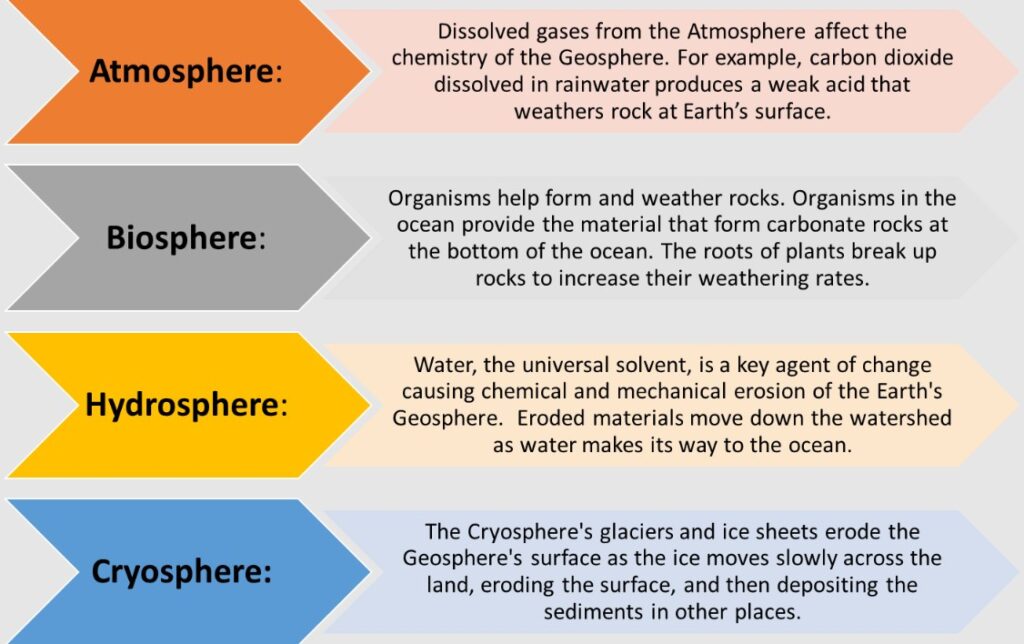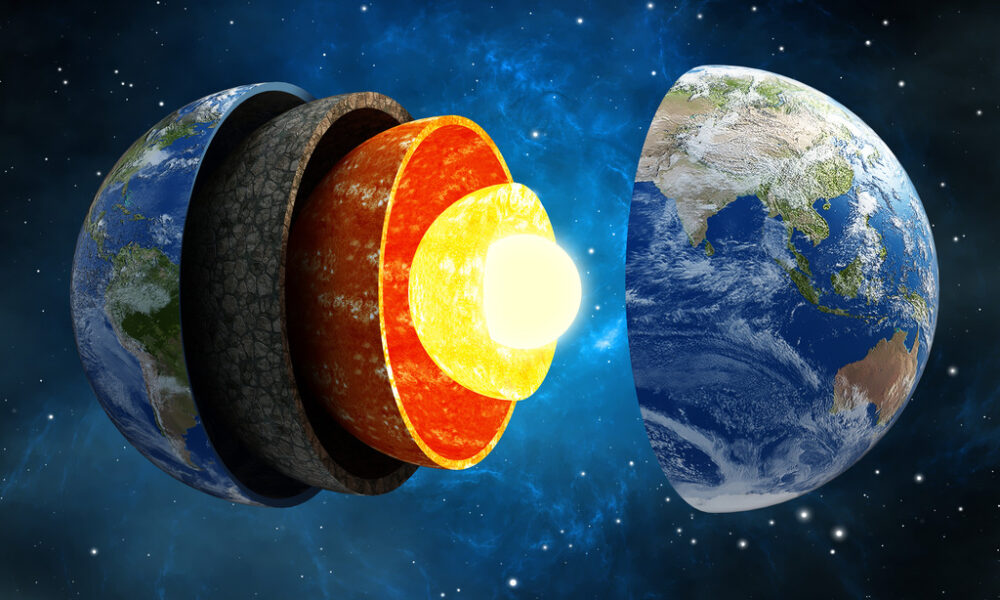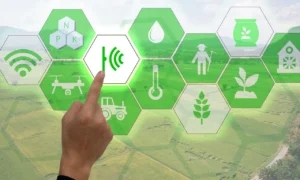Most of us take for granted the complexity of the Earth’s geosphere. Without giving its formation or what lies beneath much thought, we drive, stroll, and live on its surface. However, a closer examination of the geosphere can provide exciting new information about the past, present, and future of our planet.
From the crust to the mantle and core, we’ll examine the structure of our planet in detail and explore how it has evolved over billions of years. The earth system interactions between the lithosphere, hydrosphere, cryosphere, atmosphere, and biosphere are also vital parts of the geosystem, and we’ll explore how they interact with one another to shape the environment around us.
Keep reading to learn more about the incredible and complex world of Earth’s geosphere.
Definition of the Geosphere
The geosphere is a term used to describe the solid part of the Earth, including the rocks, minerals, and other geological materials that make up the planet’s interior. This layer of the Earth is composed of several sublayers, including the uppermost layer of the crust, the more dense and solid mantle, and the extremely dense core.
The geosphere plays a crucial role in shaping the natural processes on Earth, including the formation of mountains, valleys, and other landforms.
Its composition also affects the planet’s magnetic field, which plays a vital role in protecting Earth from solar radiation. Understanding the different components of the geosphere is essential to understanding the complex and dynamic system that makes up our planet.
Factors Impacting the Geosphere

Source: mynasadata.larc.nasa.gov
The geosphere is an intricate and complex system that is influenced by a variety of factors. To better understand the Earth’s geosphere, it is necessary to consider the factors that impact it. There are many different factors that can influence the geosphere, including tectonic activity, erosion, climate change, and volcanic activity.
- Tectonic activity, for example, can influence the geosphere by contributing to the formation of mountains and oceanic crust.
- Erosion, on the other hand, can influence the geosphere by shaping the landscape and creating new landforms.
- Climate change is another important factor that can impact the geosphere, as it can alter the frequency and intensity of natural hazards such as floods and landslides.
- Finally, volcanic activity can influence the geosphere by contributing to the formation of new land and releasing gases that can impact the planet’s atmosphere.
Types of Landforms and Their Formation
Landforms are physical features that appear on the surface of the Earth and are integral to the planet’s geosphere. There are three main types of landforms: mountains, plateaus, and plains. Mountains are formed by tectonic activity, as plates collide and one plate is pushed up and over the other.
- The movement of tectonic plates also creates the formation of plateaus, which are elevated flatlands that are either uplifted or created by volcanic activity.
- Plains, on the other hand, are vast lowlands that form over long periods through erosion and deposition by natural forces such as wind and water.
Understanding the formation of landforms is crucial in studying the Earth’s geosphere, which plays a vital role in shaping the planet’s climate, weather, and various other natural phenomena.
Role of Water and Wind in Geosphere Erosion

Source: nationalgeographic.org
Geosphere erosion, the process of breaking down and removal of the earth’s surface, is influenced by various external factors, including water and wind. In the earth’s geosphere, water and wind play significant roles in shaping and modifying the landscape.
- Water erosion occurs when moving water, whether through rain, rivers, or waves, wears away soil and rock.
- Wind erosion, on the other hand, refers to the transportation of soil and rock particles through wind action.
These two erosive forces shape the earth in different ways, with water erosion commonly creating valleys and canyons, while wind erosion tends to create distinct land formations, such as sand dunes.
Understanding the role of water and wind in geosphere erosion is essential, as it can have significant long-term effects on the earth’s surface and natural resources. Further scientific research and exploration into these processes can lead to a better understanding of our natural environment and help us develop sustainable solutions for future generations.
Plate Tectonics and Its Effect on the Geosphere
The study of plate tectonics is a fundamental part of understanding the Earth’s geosphere. It involves examining the movement and interactions of the tectonic plates that make up the Earth’s crust. The movement of these plates can have a profound effect on the geosphere, including the formation of mountains, the creation of new landforms, and the evolution of the planet’s climate.
By studying plate tectonics, scientists are able to gain insight into the Earth’s history and how it has evolved over time. Additionally, this knowledge can help us better understand and prepare for natural disasters such as earthquakes, tsunamis, and volcanic eruptions. Overall, the study of plate tectonics is a critical component in fully comprehending the complexities of the Earth’s geosphere.
Best Practices for Protecting the Geosphere

Source: sierranevadajourneys.org
The geosphere is a vital part of our planet, providing us with the resources and foundation necessary for our existence. As such, it’s important to take steps to protect and conserve it. In this section, we will outline eight best practices for protecting the geosphere.
- Reducing our reliance on non-renewable resources such as coal and oil is paramount, and investing in clean and renewable sources of energy is key.
- Addressing soil degradation and erosion through sustainable agricultural practices can prevent further land loss.
- Protecting and preserving natural habitats and ecosystems helps maintain biodiversity and ecosystem services.
- Monitoring and managing land and water use can help prevent pollution and depletion.
- Promoting efficient waste management and recycling can prevent contamination of the environment.
- Employing sustainable transportation practices can reduce greenhouse gas emissions and air pollution.
- Implementing sustainable development plans and maintaining sustainable urban green spaces can ensure the protection of natural resources.
- Educating individuals and communities about the importance of the geosphere and implementing environmentally-conscious strategies in everyday life is essential for long-term sustainability.
In Conclusion
The geosphere is a complex and fascinating system that plays a crucial role in shaping our planet. From the rock cycle to plate tectonics, there are many processes and interactions that make up this vast system.
By understanding these processes, we can better appreciate the dynamic nature of our Earth and work towards preserving its health and resources for future generations. As we continue to explore and study the geosphere, we can look forward to unlocking even more secrets about our planet’s history and its potential for the future.

















